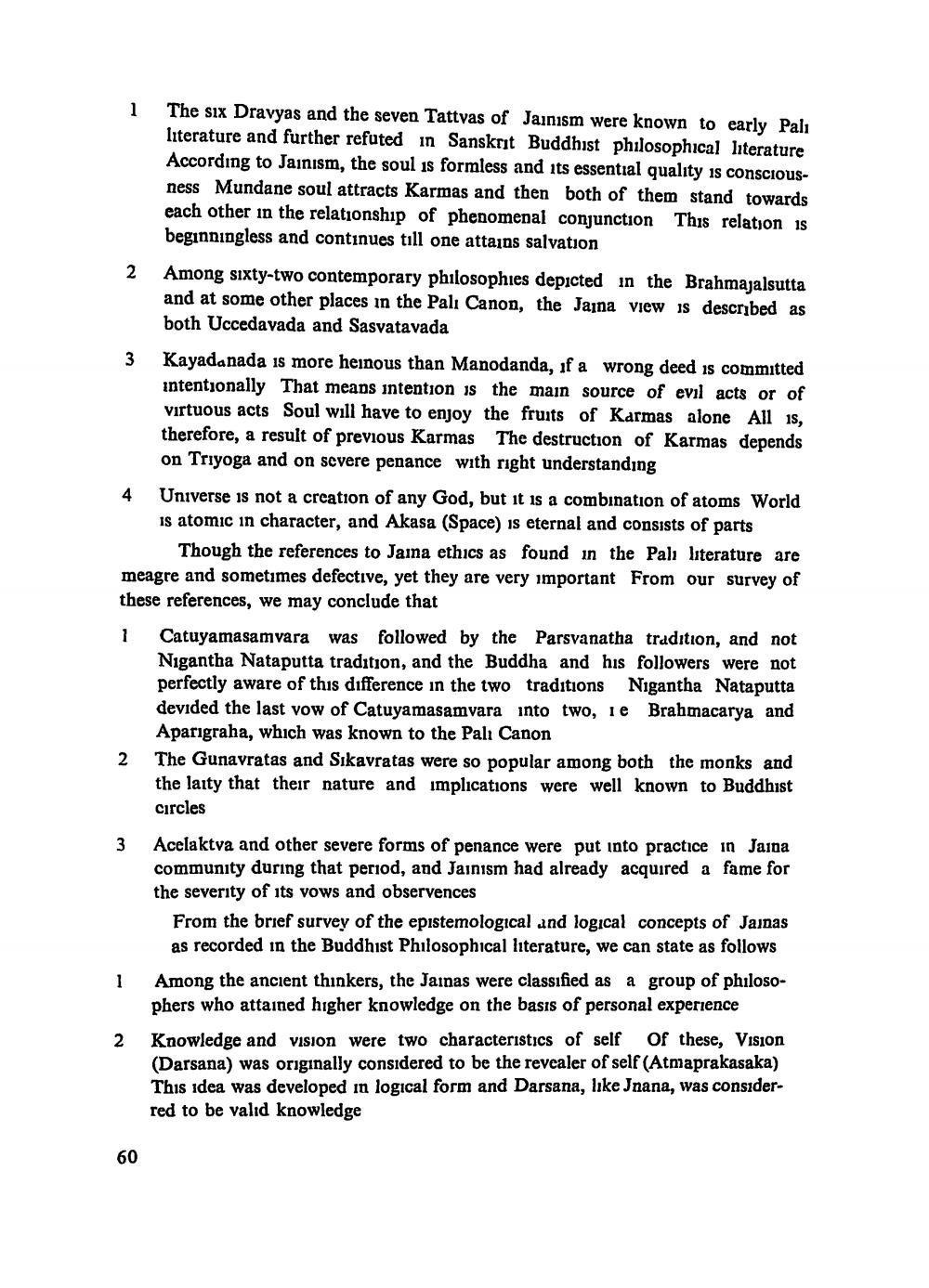________________
The six Dravyas and the seven Tattvas of Jainism were known to early Pali literature and further refuted in Sanskrit Buddhist philosophical literature According to Jainism, the soul is formless and its essential quality is consciousness Mundane soul attracts Karmas and then both of them stand towards each other in the relationship of phenomenal conjunction This relation is beginningless and continues till one attains salvation
3
Among sixty-two contemporary philosophies depicted in the Brahmajalsutta and at some other places in the Pali Canon, the Jajna view is described as both Uccedavada and Sasvatavada Kayadanada is more heinous than Manodanda, if a wrong deed is committed intentionally That means intention is the main source of evil acts or of virtuous acts Soul will have to enjoy the fruits of Karmas alone Allis, therefore, a result of previous Karmas The destruction of Karmas depends on Triyoga and on severe penance with right understanding
Universe is not a creation of any God, but it is a combination of atoms World is atomic in character, and Akasa (Space) is eternal and consists of parts
Though the references to Jaina ethics as found in the Pali literature are meagre and sometimes defective, yet they are very important From our survey of these references, we may conclude that 1 Catuyamasamvara was followed by the Parsvanatha tradition, and not
Nigantha Nataputta tradition, and the Buddha and his followers were not perfectly aware of this difference in the two traditions Nigantha Nataputta devided the last vow of Catuyamasamvara into two, ie Brahmacarya and Aparigraha, which was known to the Palı Canon The Gunavratas and Sikavratas were so popular among both the monks and the laity that their nature and implications were well known to Buddhist circles
Acelaktva and other severe forms of penance were put into practice in Jaipa community during that period, and Jainism had already acquired a fame for the severity of its vows and observences
From the brief survey of the epistemological and logical concepts of Jainas
as recorded in the Buddhist Philosophical literature, we can state as follows Among the ancient thinkers, the Jainas were classified as a group of philosophers who attained higher knowledge on the basis of personal experience Knowledge and vision were two characteristics of self of these, Vision (Darsana) was originally considered to be the revealer of self (Atmaprakasaka) This idea was developed in logical form and Darsana, like Jnana, was considerred to be valıd knowledge
60




